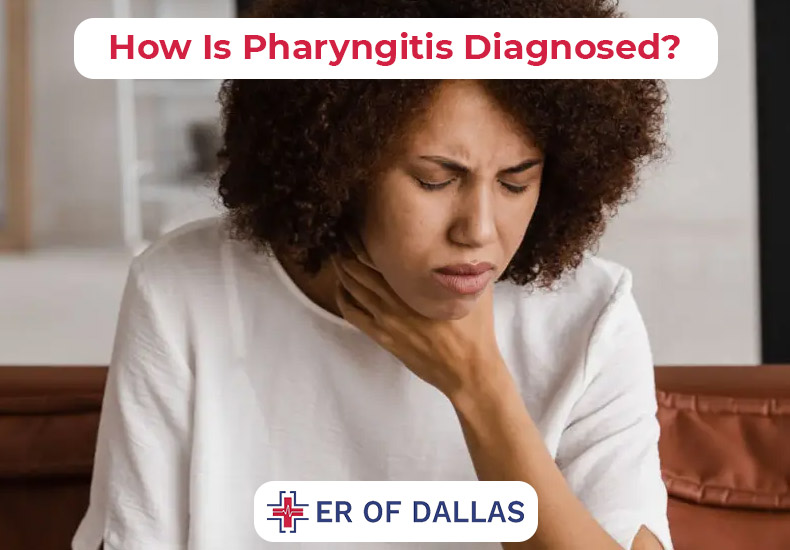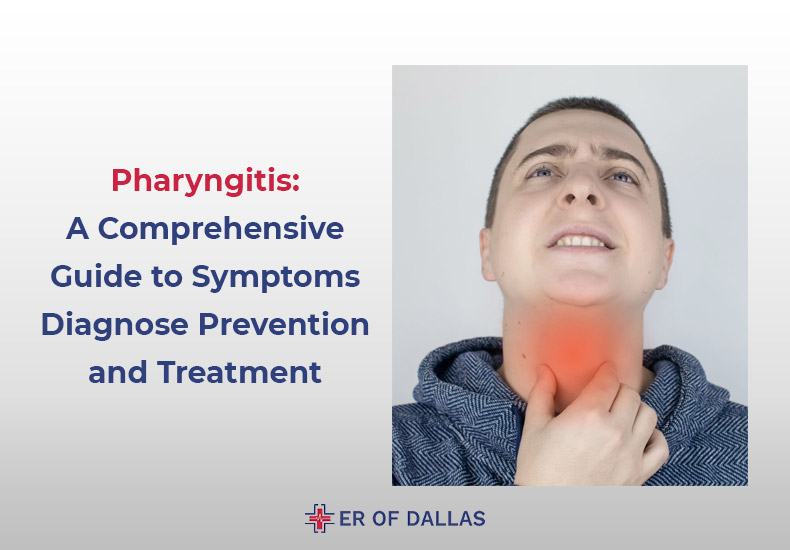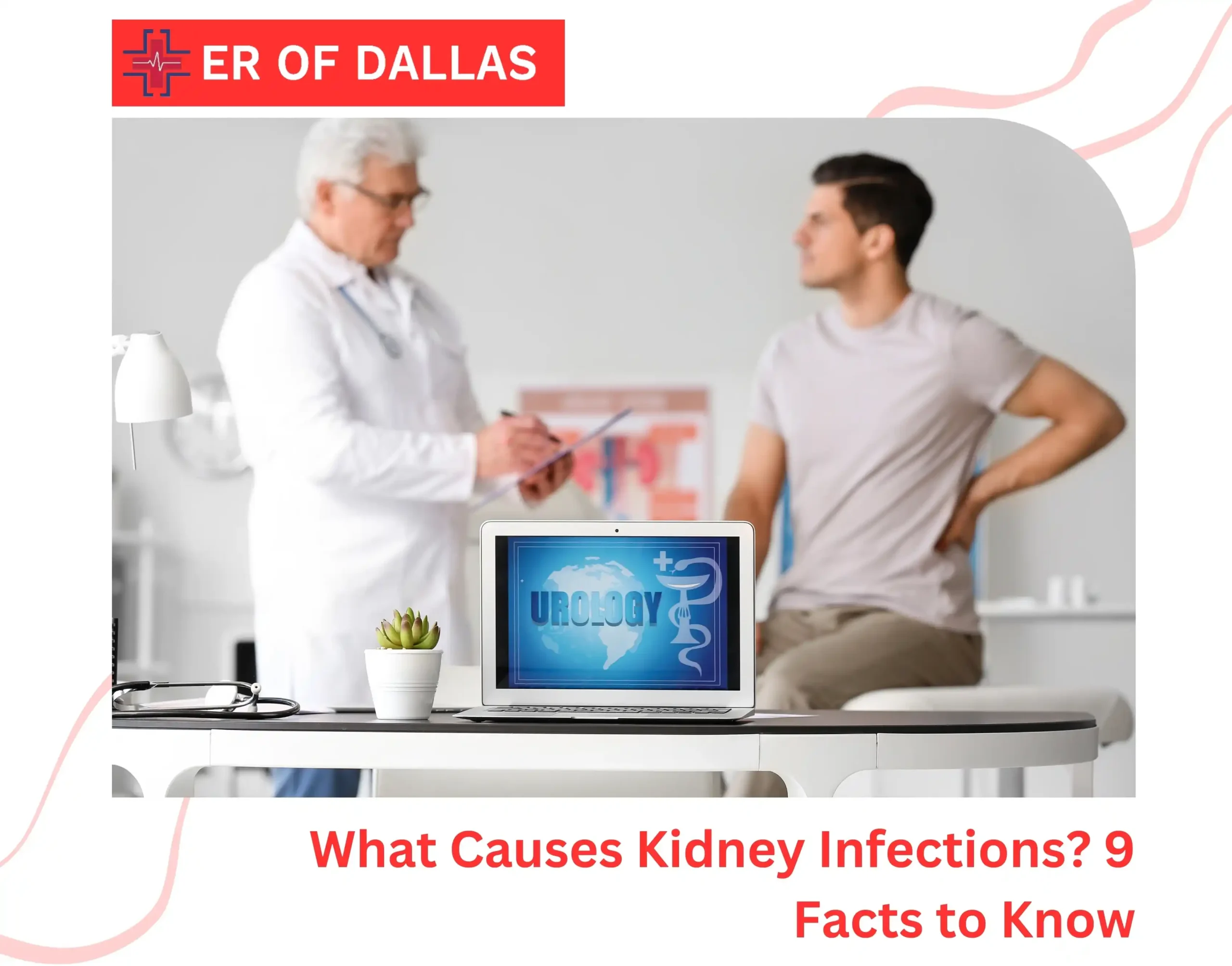What is Pharyngitis?
Pharyngitis is the medical term for a sore throat. Viral illnesses like the common cold or bacterial infections like group A streptococcus can result in pharyngitis.
A frequent ailment that rarely warrants concern is pharyngitis. Viral pharyngitis usually clears up on its own in a week or so. Nonetheless, by understanding the reason, people can concentrate on their therapeutic alternatives.
This article examines the causes, signs, and modes of transmission of pharyngitis. We also go into linked sickness prevention, diagnosis, and therapy.

Is Viral Pharyngitis Contagious?
Indeed, sore throats are commonly caused by viral pharyngitis, which is infectious. Respiratory droplets can spread viral infections, which are the primary cause of this illness and include the flu and common cold viruses. These droplets are released when an infected person coughs, sneezes, or talks, which opens the possibility of transmission through close contact. Until the symptoms subside, the incubation period of viral pharyngitis remains contagious.
This highlights how important it is to practice good hygiene, including washing your hands frequently, to lower the risk of spreading infections. To stop this virus from spreading widely, one must be aware of how contagious it is.
What Are The Chronic Pharyngitis Symptoms
It usually takes two to five days for the incubation phase to complete. Different underlying illnesses can cause different symptoms of pharyngitis.
Apart from a scratchy, dry, or sore throat, a cold or flu can also result in:
- Sneezing
- Runny nose
- Headache
- Cough
- Exhaustion
- Bodily pains
- Fever (higher-grade fever with the flu and lower-grade fever associated with a cold)
The following are additional signs of mononucleosis besides a sore throat:
- Enlarged lymph nodes
- Extreme exhaustion fever aching in the muscles overall malaise
- Appetite loss rash
Another form of pharyngitis called strep throat can also result in:
- A hard time swallowing
- Crimson throat dotted with white or gray areas
- Enlarged lymph nodes
- Fever
- Chills
- Appetite decline
- Nausea
- Strange flavor in the mouth
- Overall ill health
The duration of the contagious period is also influenced by your underlying health condition. If you have a virus, you will be contagious until your fever goes down. From the moment you have strep throat, until you have taken antibiotics for a full day, you risk spreading the virus.
How Is Pharyngitis Diagnosed?
Sore throats can result from a variety of underlying medical conditions. Although viral infections are the most common cause of pharyngitis, a correct diagnosis is still essential for the illness’s successful management.

A doctor will usually begin with a physical examination to diagnose pharyngitis. Apart from examining the patient’s present symptoms, they will also search for indications of infection in their throat, ears, and nose.
A doctor is unlikely to order more testing if a patient has clear-cut signs of a viral disease.
If the physician suspects a bacterial illness, they may order a throat culture to confirm the diagnosis. To do this, a throat swab must be taken from the individual and sent to a lab for analysis.
Physical Examination
To find out if you have symptoms of pharyngitis, your doctor will examine your throat. They will search for regions that are white or gray, swollen, or red. Your ears and nose may also be examined by your physician. They will feel for swollen lymph nodes on the sides of your neck.
Culture of The Throat
If your doctor suspects that you have strep throat, they will probably perform a throat culture. The process involves taking a sample of your throat secretions with a cotton swab. The majority of physicians can perform a quick strep test in their offices. Your doctor will be notified within minutes if a streptococcus test is positive.
Transmission of Pharyngitis
Pharyngitis can be transmitted by viruses as well as bacteria. The germs that cause pharyngitis frequently reside in the throat and nose.
When an affected person coughs or sneezes, tiny droplets of the bacteria or virus are released into the air.
- An infection can be acquired by inhaling these tiny droplets.
- Touch contaminated objects, then touch their face
- Consuming and consuming contaminated food or drinks
Because of this, it’s important to wash your hands before handling food or touching your face.
Most people recover from viral illnesses, such as the common cold, in 7–10 days on average. Nonetheless, due to the virus’s incubation period, people may still be infectious even when they don’t exhibit any symptoms.
Pharyngitis Prevention
The best approach to avoid sore throats is to maintain proper cleanliness and stay away from microorganisms that cause them. These recommendations could be useful:
- Give your hands a thorough 20-second wash every time, especially after using the restroom.
- Refrain from touching your face. Avoid making contact with your lips, nose, or eyes.
- Steer clear of sharing meals, drinks, and cutlery.
- Sneeze or cough into a tissue paper, then throw it away before washing your hands.
- Clean your hands frequently by using alcohol-containing hand sanitizers.
- Do not use drinking fountains or public phones.
- Keep phone handsets, light switches, remote controls, doorknobs, and computer keyboards clean and sterilized regularly.
- Refrain from being near sick or symptomatic people.
Chronic Pharyngitis Treatment
Viral infections do not create sore throats that can be treated with antibiotics. Furthermore, using antibiotics unnecessarily increases the chance of side effects like rash, diarrhea, and allergic reactions. Viral infections typically cause sore throats that disappear after four to five days. Pain-relieving therapy techniques are among the more effective ones. For example, consider:

- Gargles with salt water: Gargling with salt water has long been used as a treatment for throat pain, even though there is no conclusive proof of its effectiveness in that regard. A solution of 1/4 to 1/2 teaspoon (1.5 to 3.0 g) salt and 1 cup (250 mL) warm water is advised.
- Mouth sprays: Benzocaine and phenol are examples of topical anesthetic sprays that can be used to treat sore throats. Despite this, these sprays don’t work any better than hard candies.
- Lozenges: Topical anesthetics are present in some throat lozenges. They can keep the throat moist and aid in the treatment of throat pain. In addition, lozenges have a longer duration of action than mouth sprays or gargles. Lozenges are therefore more effective.
- Painkillers: Over-the-counter painkillers are an efficient and quick way to treat throat pain. The ailment can be treated with acetaminophen (paracetamol) or a nonsteroidal anti-inflammatory medicine (“NSAID“), such as naproxen or ibuprofen. Oral steroids have advantages, but they should only be used for brief periods due to possible negative side effects.
- Foods and drinks: Chicken soup, warm honey or lemon tea, ice cream, popsicles, and cold drinks can all relieve sore throats.
- Other modes of operation: Supplement and health food retailers both online and offline have products for treating sore throats. These goods may, however, be mislabeled, have incorrect dosage instructions, or include pesticides or herbicides. Furthermore, little research has been done to ensure the efficacy and safety of these products. Consequently, it is not advised to use these kinds of treatments.
Similar Conditions
Inflammation of the throat is a common medical issue, and it can result from a variety of causes. Other possible causes can include:
Pharyngitis vs Laryngitis
Laryngitis is an inflammation of the larynx or voice box. The voice cords are located in the larynx, in front of the throat, and above the windpipe.
Vocal cord inflammation can result in hoarseness and in rare cases, temporary voice loss in some persons. People can strain their vocal cords and develop laryngitis by shouting or using their voice excessively.
Additional reasons for laryngitis include:
- Allergies
- Stomach acid caused by viruses causing acid reflux
- Infections caused by bacteria
Pharyngitis vs Tonsillitis
Tonsill is the term for tonsil irritation. The tonsils are tissue clusters situated on both sides of the pharynx. Tonsillitis can result from either a viral or bacterial infection. A collection of Bacterial tonsillitis can also be brought on by a Streptococcus bacterial infection.
Tonsillitis is rarely harmful and often resolves on its own or after a short course of oral antibiotics. In case the illness persists or flares up again, a physician can suggest surgically excising the tonsils. Recurrent tonsillitis is defined as seven bouts in a year, five in two years, or three in three years.
The number of absences from school that a child has could also influence a doctor’s recommendation to remove them. If a tonsil abscess forms, surgical drainage may be necessary.
Pharyngitis and tonsillitis share similar symptoms. Pharyngitis is essentially a subtype of tonsillitis. Among the signs of both are:
- Red, swollen tonsils, and a sore throat
- Tonsil white or yellow spots swallowing difficulties stomach ache
- Headache and neck tightness
Viral pharyngitis vs Strep Throat
An ulcer is a pus-filled lesion on the neck, food pipe, vocal cords, or mouth. Causes of throat ulcers include:
- Stomach acid reflux or acid reflux caused by vomiting
- Illnesses brought on by bacteria or viruses that damage the tissue lining the throat
- Chemotherapy
The symptoms of pharyngitis and throat ulcers are similar. These include:
- A painful throat or Fever; white patches;
- Feeling cold
- Swollen lymph nodes
How Long Does Viral Pharyngitis Last
Viral pharyngitis often goes away in five to seven days. If you have bacterial pharyngitis, you will recover after two to three days of antibiotics. You must take your antibiotic even after you start feeling better.

Conclusion
Pharyngitis is rarely a serious sickness and often coexists with colds and the flu. Viral pharyngitis typically clears up on its own in a few weeks, while bacterial pharyngitis may require medication treatment to prevent complications.
Complications from pharyngitis such as rheumatic fever are uncommon. Patients who have severe, ongoing, or recurring symptoms should see a doctor at the Dallas Emergency Room.
Maintaining personal hygiene and covering the mouth and nose when coughing or sneezing may help prevent the spread of bacteria that might cause pharyngitis.











